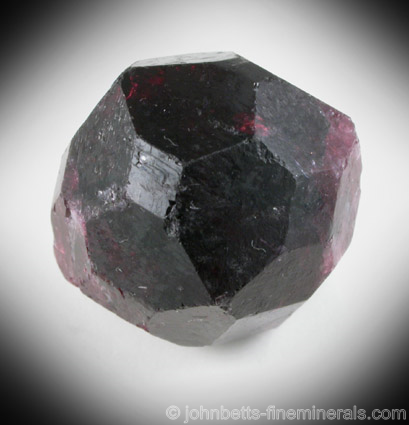The garnet Mineral Group

Garnet is not a single mineral, but a group contains closely related, isomorphous minerals that form a series with each other. The Garnet members form intermediary minerals between each member, and may even intergrow within a single crystal. The Garnets vary only slightly in physical properties, and some of the members may be so similar that they are indistinguishable from one another without x-ray analysis.
The common Garnets can be divided into two subgroups:
Group 1: Garnets containing aluminum (Al) as their second element.
These include Pyrope, Almandine, and Spessartine. ("Pyralspite")
Group 2: Garnets containing calcium (Ca) as their first element.
These include Uvarovite, Grossular, and Andradite.
("Ugrandite")
The members of each group freely intermingle among one another. For example, the magnesium in Pyrope may be partially replaced by some iron from Almandine or by some manganese from Spessartine. However, between the two groups of Garnets, it is much rarer for them to intermingle.
Chemical Formula
The Garnet Group is composed of several minerals with related chemical formulas. The generic formula for the common Garnets is:
X2+3Y3+2Si3O12
X represents Ca, Fe2+, Mn, or Mg
Y represents Al, Cr, or Fe3+
A more comprehensive list can be found in The chemical formula of Garnet.
The chemical formula for the main individual members of the Garnet group are:
Pyrope: Mg3Al2Si3O12
Almandine: Fe2+3Al2Si3O12
Spessartine: Mn3Al2Si3O12
Grossular: Ca3Al2Si3O12
Andradite: Ca3Fe3+2Si3O12
Uvarovite: Ca3Cr2Si3O12
Color
Red, brown, black, green, yellow, orange, pink, white, and colorless. (Garnets come in all colors with the exception of bluish shades.) Massive specimens from certain localities can be multicolored white, pink, and/or light green.
Uses
The Garnets are important minerals, and are primarily known for their gemstone uses. The transparent varieties are used in all forms of jewelry, with the most extensively used color being dark red. Other Garnet forms such as the reddish-orange Spessartine, yellow Grossular, and the green Tsavorite and Demantoid also make fine gemstones.
See the gemstone section on Garnet for more detailed information, as well as the individual Garnet gemstone variety pages on Almandine, Pyrope, Rhodolite, Spessartite, Grossular, Tsavorite, Andradite, and Uvarovite for more detailed gemstone information on each Garnet gemstone form.
Garnets with a high hardness are used as an abrasive, and can be made into sandpaper known as Garnet paper. Well formed crystals and interesting aggregates very popular among mineral collectors.
Noteworthy Localities
See the individual Garnet member pages for detailed locality information for each form of Garnet.
Common Mineral Associations
See Individual Garnets
garnet
Photos
The pictures below show just one example of each individually named common member of Garnet. For more images, see the specific pages on Almandine,
Pyrope, Spessartine, Grossular, Andradite, and
Uvarovite.